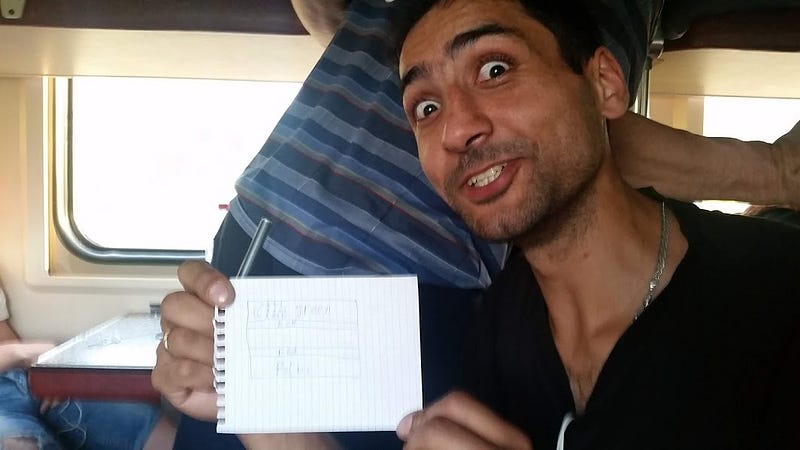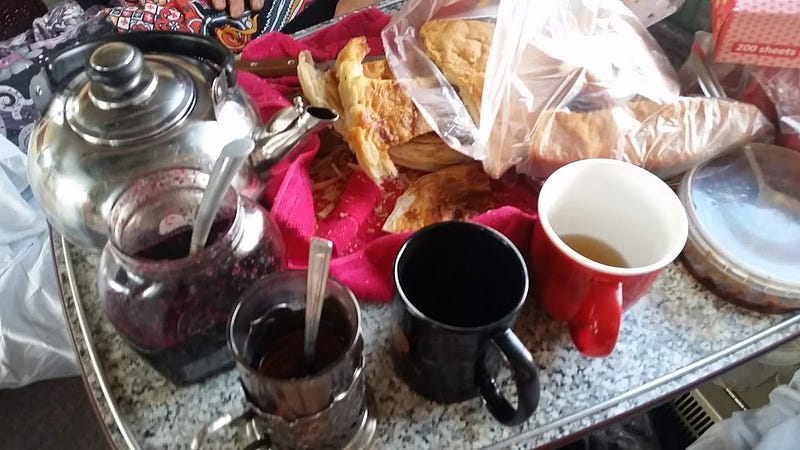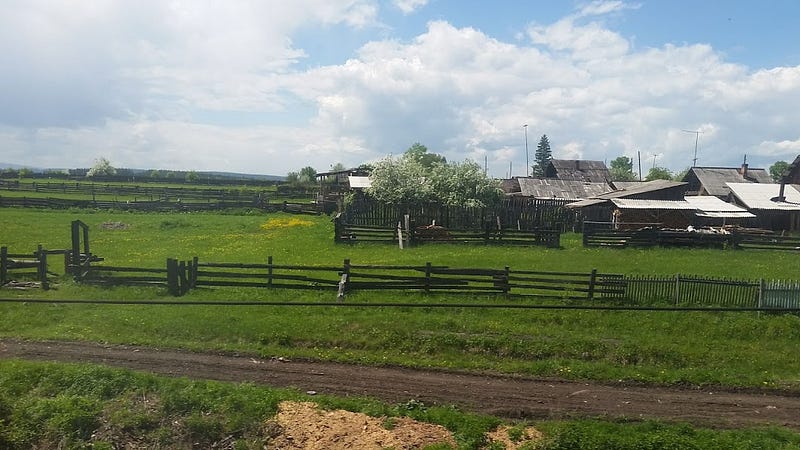How it felt like to spend 52 hours on a train, Siberia, Russia
▮ Jerome Yang / 2019/08/09
Last June (2018), I took the Trans-Siberian Railway from Zabaykalsk in the Far East all the way to St Petersburg via Lake Baikal, Ekaterinburg, Kazan and Moscow. Since it’s a week-long train ride, most travelers would divide it into several segments, so did I. Nevertheless, there was still an extremely long train ride from Irkutsk (gateway to Lake Baikal) and Ekaterinburg, which took 52 hours (3 nights and 2 days). This is the longest continuous train ride in my life (second longest: Chicago to LA on the Amtrak Southwest Chief, 42 hours).

Typical scenery along the Trans-Siberian Railway So, how did it feel like to spend 52 hours on a train? To be honest, it was very fun!
-
I took the lowest class (platskartny, or 3rd class), made of 54 berths arraying in an open-plan car. This means I inevitably had to interact with people, as there’s no way to shut myself. I happened to sit right next to a group of Uzbeks, and was overwhelmed by their hospitality. Despite the linguistic obstacle, they generously shared tea and snacks with me, and even tried to feed me with Vodka. We made fun of each other with body language throughout the 2 days until they got off. Interestingly, the hospitality didn’t come at no cost — I was asked to help them unload their belonging (which consisted of 7–8 heavy luggage-size bags), although it was nothing compared to their hospitality and friendship.
-
What to eat? There might be a dining car, but no one around me went there. Everyone simply brought their own food onboard. Every car was equipped with a coal-fueled water boiler, so hot water was available at all times. With the water, people made tea throughout the day, as well as instant noodles and instant mashed potatoes. As for me, I bought a jumbo pack of instant noodles in China (which taste better) before entering Russia. In combination with fresh eggs, vegetables and tomatoes purchased in Irkutsk, I never experienced hunger or malnutrition on the way.
-
Spending on the berth was a great experience! The Russian Railway always provided every passenger a set of clean linens (including sheets, pillowcase and towel), as well as mattress, blanket and pillow. With all these you can make your own bed and sleep very comfortably. The gentle quaking of the train even helped my sleep!
-
Bored? Not really. Siberia is gorgeous in the summer. It might not be astonishing at all, but the beautiful and tranquil prairie, forest and villages flying by had never got me tired.
Inside the train — each section has 6 berths, 2 on one side and 4 on the other. Folding tables are used during daytime.
My Uzbek friend used a pen and a notebook to show me how the Uzbek flag looks like
Every meal can be a feast when you meet some incredibly generous people.
The train tends to stop for a long time at major cities, when you can get out of the train and stretch
Along the way
Along the way
Other highlights along the Trans-Siberian Railway
If you travel like me on the mainline from Zabaykalsk (across the border from Manzhouli, Inner Mongolia in China) to Moscow/St Petersburg, or the opposite direction, I’d recommend to stop by the following cities:
-
Ulan-Ude: an interesting Asian-Russian city. You’re likely to encounter more Asian/Mongolian faces than Russian, and can visit Tibetan Buddhist temples throughout the city.
-
Irkutsk: gateway to Olkhon Island, the most popular destination around Lake Baikal, as well as other destinations. The city has a great pedestrian street 130 Kvartal, where you can take a stroke through a renovated historic area and find good restaurants.
-
Ekaterinburg: a contemporary city highlighted by Church on Blood and Yeltsin Museum.
-
Kazan: capital of Tartarstan, a Turkic-majority autonomous republic within the Russian Federation. Splendid mosques and sophisticated Orthodox churches stand here side by side.
Ulan-Ude
130 Kvartal in Irkutsk
Ganina Yama near Ekaterinburg, where several delicate wooden churches stand
Mosque in Kazan
If you’d like to go…
-
Now almost all tickets can be purchased online and validated on your phone. There’s no need to print or claim your ticket. Russian Railways’ website (https://pass.rzd.ru/) has English interface and is very easy to use. They even provide customer service in English. The only problem I ran into is the rejection of credit card after the first few purchases. Switching to a different card can help. When you board the train, the attendant would check the name on your passport and make sure it matches the name in the system.
-
The biggest trick of the Russian Railways system: everything shown on the schedule as well as your ticket is in Moscow time (GMT+3)! This means you should always double check the departure time and convert it to a local time. For example, if a train is scheduled to leave Zabaykalsk (GMT+9) at 23:00 Moscow time, it actually leaves at 5:00 next day in Zabaykalsk’s local time.
-
It is not advised to take the thru train from Russia into China (or vice versa), as the tickets are usually much more expensive. Instead, take Chinese domestic trains to Manzhouli, and hop on a bus at Manzhouli International Bus Terminal to Zabaykalsk. The bus will take you over the border, drop you at Zabaykalsk station, and shouldn’t cost more than 100RMB each way.
-
If you cannot find ticket from city A to city B, try to break it down into more segments. There tends to be more options if you go by shorter segments, and may cost less as well.
The beginning of the grand railway, Moscow











